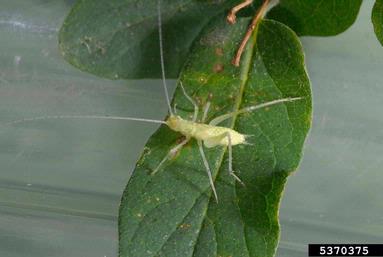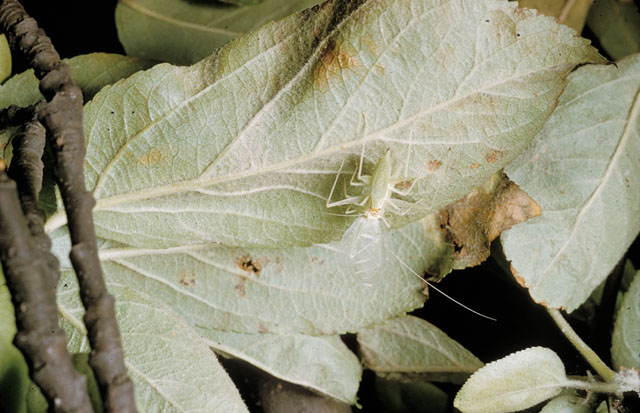Reproduction
The male Oecanthus fultoni makes a high pitched song to
attract females. Once a female is near the male, he switches
songs to a lower courtship song (Brown 1999). Females can choose
the song they are most attracted to; they follow the song until
they reach a male.
Also if the female is in close proximity to the singing male,
his scent can lead her to him. Also females may be more inclined
to follow in the direction of synchronizing males than to follow
the call of a lone male (Walker 1969).
The male initiates mating by backing into her, but the female
can reject him if
she chooses. When mating occurs, the female eats the thick
secretions from the male's metanoal gland that is located near
his hind wings (Brown 1999). The secretions increase the
likelihood of reproduction because they provide the female with
essential nutrients.
In the fall, females drill a hole in a branch or stem and lay
their eggs. The eggs hatch in the spring as nymphs. The snowy
tree cricket has direct development because when they hatch the
offspring look like little adults, but without wings. The nymphs
go through several stages of maturation and at the end of each
stage they molt and look more and more like an adult. You will
know it is a mature adult when you see that it has two pairs of
wings. They
emerge as fully mature adults during midsummer to early autumn
and that is when the mating season begins (Brown 1999).
The mating season lasts up until the
first frost.


Retun to Home Page